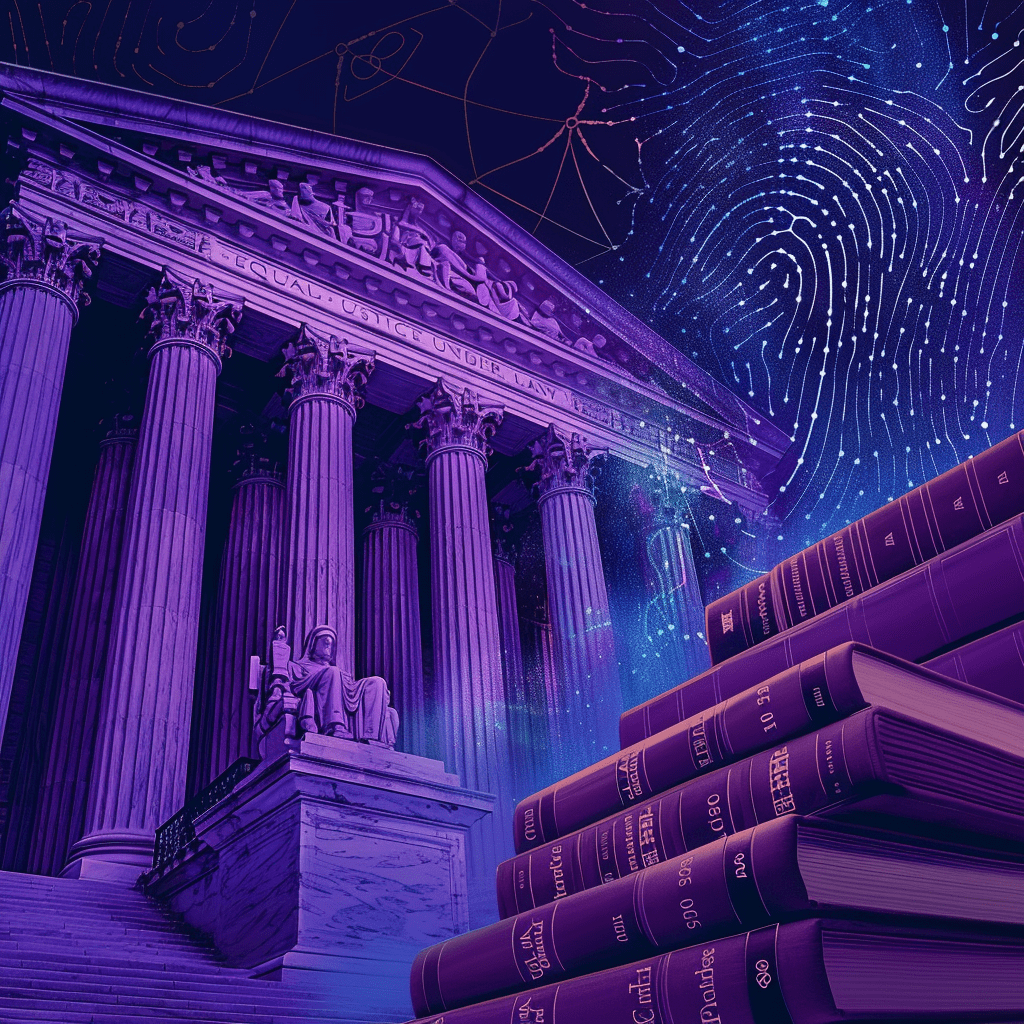Case Law Developments in Digital Forensics
In the rapidly evolving field of digital forensics, legal professionals face the constant challenge of staying abreast of how recent case laws shape the use, analysis, and admissibility of digital evidence in courtrooms. This article examines pivotal cases that have recently influenced the landscape of digital forensics, including computer forensics, mobile phone evidence, videos, and digital photographs. Given the intricate nature of digital evidence, its handling, analysis, and presentation in legal proceedings are of paramount importance. The audience for this piece includes lawyers who are keen on understanding these developments to navigate their cases more effectively.
Introduction to Digital Forensics in Legal Practice
Digital forensics is a field that has gained prominence due to the digital nature of many modern criminal activities. It involves the recovery and investigation of material found on digital devices, often necessitating a nuanced understanding of both legal principles and technological advancements. The legal acceptance of digital evidence, while growing, faces challenges related to authenticity, reliability, and privacy concerns. The Supreme Court, in various decisions, has begun to set precedents that address these challenges, thus shaping the protocols for handling digital evidence.
Landmark Supreme Court Decisions
The landmark Supreme Court case Riley v. California emerged as a critical juncture in the conversation around digital privacy and the Fourth Amendment, significantly influencing law enforcement practices and the legal landscape of digital evidence. At the heart of the case was the question of whether police officers have the right to search digital devices, such as smartphones, without a warrant during an arrest. This issue came to the forefront due to the arrest of David Leon Riley, who was stopped for a traffic violation, leading to his subsequent arrest on weapons charges. During the arrest, officers searched Riley’s smartphone without a warrant, uncovering evidence linking him to a shooting. The evidence obtained from the smartphone played a crucial role in his conviction, raising important questions about the constitutionality of warrantless searches of digital devices.
The Supreme Court’s unanimous decision in 2014, declaring such searches unconstitutional without a warrant, underscored the distinct nature of digital devices. These devices, capable of storing vast quantities of personal and sensitive information, were deemed fundamentally different from other types of evidence traditionally subject to search upon arrest. The Court recognized that smartphones are not merely tools for communication but are essentially “mini-computers” that hold the “privacies of life,” including emails, messages, photographs, and documents, among other data.
By requiring law enforcement to obtain a warrant before accessing the information stored on a digital device, the Supreme Court significantly strengthened the protections afforded to digital privacy under the Fourth Amendment. This ruling has had far-reaching implications, affecting not only law enforcement agencies and their evidence-gathering practices but also setting a precedent for how privacy rights are perceived in the digital age. It highlighted the need for the legal system to adapt to the realities of modern technology, ensuring that the right to privacy is preserved in the face of ever-evolving digital innovations.
The impact of Riley v. California extends beyond the specific context of arrests and warrantless searches. It has influenced subsequent legal debates and cases concerning digital privacy and the extent of law enforcement’s authority to access digital data. The decision has been cited in numerous cases and discussions around the legality of government surveillance, data collection practices, and the boundaries of individual privacy rights in an increasingly digital world.
Moreover, the ruling has prompted law enforcement agencies to adjust their procedures and practices, emphasizing the importance of securing warrants based on probable cause before conducting searches of digital devices. This shift has not only safeguarded individuals’ privacy rights but has also underscored the importance of judicial oversight in the process of evidence gathering.
In conclusion, Riley v. California represents a pivotal moment in the intersection of law, technology, and privacy. By recognizing the unique nature of digital data and the devices that store it, the Supreme Court’s decision has laid a foundational principle for digital privacy rights, ensuring that constitutional protections keep pace with technological advancements. This case has become a cornerstone in the ongoing dialogue about the digital era’s balance between security interests and individual rights, influencing legal standards and practices related to digital evidence and privacy.
Authenticity and Admissibility of Digital Evidence
The authenticity and admissibility of digital evidence are governed by the Federal Rules of Evidence, with Rules 901 and 902 providing the legal framework necessary for authenticating such evidence. This framework is crucial in the digital age, where the integrity of digital files—ranging from text messages and emails to digital photographs and video footage—plays a pivotal role in legal proceedings. Recent case law, including *United States v. Jones*, has emphasized the importance of meticulous forensic analysis and comprehensive documentation to establish a reliable chain of custody. This process ensures that digital evidence presented in Court is both authentic and untampered, making it admissible for judicial consideration. The evolution of these legal standards reflects the judiciary’s recognition of the complex nature of digital data and the necessity for robust procedures to verify its authenticity, thereby safeguarding the integrity of the legal process in cases involving digital evidence.
The Fourth Amendment and Digital Privacy
 The Fourth Amendment protects citizens from unreasonable searches and seizures, underscoring the right to privacy. In Carpenter v. United States, the Supreme Court addressed whether the government needs a warrant to access historical cell phone location records. The Court ruled that obtaining these records without a warrant constitutes an unreasonable search, requiring law enforcement to obtain a warrant based on probable cause to access such data. This decision reflects the Court’s recognition of the sensitivity of location information and its potential to reveal intimate details of an individual’s life. This ruling significantly impacts digital and mobile forensics by establishing stricter guidelines for accessing digital evidence, particularly in cases involving location data. It underscores the importance of safeguarding privacy rights in the digital age, ensuring that advancements in technology do not erode fundamental constitutional protections.
The Fourth Amendment protects citizens from unreasonable searches and seizures, underscoring the right to privacy. In Carpenter v. United States, the Supreme Court addressed whether the government needs a warrant to access historical cell phone location records. The Court ruled that obtaining these records without a warrant constitutes an unreasonable search, requiring law enforcement to obtain a warrant based on probable cause to access such data. This decision reflects the Court’s recognition of the sensitivity of location information and its potential to reveal intimate details of an individual’s life. This ruling significantly impacts digital and mobile forensics by establishing stricter guidelines for accessing digital evidence, particularly in cases involving location data. It underscores the importance of safeguarding privacy rights in the digital age, ensuring that advancements in technology do not erode fundamental constitutional protections.
Cloud Computing and Cross-Jurisdictional Challenges
The case of Microsoft Corp. v. United States brought to light the challenges of cloud computing in a cross-jurisdictional context. It centered on whether U.S. law enforcement could compel Microsoft to hand over customer emails stored on servers located in Ireland, raising questions about sovereignty and the reach of national laws across borders. The resolution led to the enactment of the Clarifying Lawful Overseas Use of Data (CLOUD) Act, which provides a legal framework for accessing electronic data stored overseas, addressing some of the jurisdictional challenges presented by cloud computing. This case and subsequent legislation have significant implications for how digital evidence is accessed and used by computer forensics experts and lawyers, balancing the demands of law enforcement with privacy and international cooperation considerations.
These developments necessitate a nuanced understanding of international law and the specific requirements for accessing data stored on servers abroad. Forensic experts must now navigate both the technical aspects of retrieving cloud-based data and the legal implications of doing so across jurisdictions. Lawyers must ensure that evidence collection complies with these laws to maintain its admissibility in Court, highlighting the need for close collaboration between legal professionals and forensic experts.
The Role of AI in Digital Forensics
The integration of Artificial Intelligence (AI) in digital forensics represents a pivotal shift in how data is analyzed for legal purposes. AI’s capacity to process and analyze large datasets far exceeds human capabilities, enabling the identification of relevant evidence from vast digital landscapes. However, this reliance on AI also introduces challenges, particularly concerning the reliability of AI-generated outcomes and the transparency of the methodologies employed. As AI systems are trained on data, their outputs can be influenced by the inherent biases in the training material, raising questions about the objectivity of AI-assisted conclusions. Furthermore, the “black box” nature of some AI algorithms, where the decision-making process is not transparent, poses significant challenges for the legal admissibility of evidence. It necessitates a dialogue between technologists and legal professionals to ensure that AI’s role in digital forensics adheres to the principles of fairness, accountability, and transparency, safeguarding the integrity of the judicial process.
Deepfakes and Digital Authenticity
Deepfakes are digitally manipulated media that convincingly alter video or audio recordings using AI and machine learning technologies. This creates or alters content in a way that appears genuine, making it difficult to distinguish between real and manipulated media.
The emergence of deepfakes, through advanced manipulation techniques of audio and video content, introduces significant challenges to the authentication of digital evidence. This technology can create highly convincing forgeries, making it increasingly difficult to distinguish genuine recordings from manipulated ones. The situation demands the development of sophisticated forensic methods capable of detecting such manipulations and a legislative framework that addresses the misuse of deepfake technology. Ensuring the integrity of digital evidence now requires a proactive approach, blending technological advancements with legal safeguards to combat the potential for misuse and maintain trust in digital media as reliable evidence in legal contexts.
Digital Forensics: Challenges and Considerations
I understand the need for a more detailed exploration. Digital forensics, pivotal in sifting through electronic evidence, is a field marred by the swift pace of technological advancements and the complexities these bring to legal investigations. As legal professionals grapple with these challenges, the authenticity of digital evidence becomes paramount, necessitating rigorous verification processes to establish its genuineness. Furthermore, the adherence to privacy laws becomes a delicate balancing act, ensuring investigations do not infringe upon individual rights. The technical hurdles in retrieving and interpreting data—often from encrypted or damaged devices—demand a high level of expertise. This dynamic interplay between law and technology requires a sophisticated understanding of both realms, ensuring that digital evidence is both credible and ethically obtained, preserving the integrity of the legal process in the digital age.
Evolving Judicial Perspectives
As judicial systems worldwide grapple with the digital revolution, courts are increasingly faced with the challenge of understanding and integrating digital evidence. This shift is reflected in recent rulings that demonstrate a deeper judicial awareness of the complexities inherent in digital forensics. Judges and legal professionals are now required to consider the nuances of technology and its impact on evidence, privacy, and individual rights. This evolving judicial perspective necessitates continuous education and adaptation, as legal standards and practices must keep pace with technological advancements. The implications for digital forensics are profound, as legal professionals must navigate an ever-changing landscape where the lines between technology and law blur.
Conclusion
In conclusion, as legal professionals grapple with the complexities of digital evidence and evolving judicial perspectives, it is imperative to stay informed and equipped to navigate the digital landscape effectively. Here are some recommendations for lawyers:
- Continuous Education: Attend seminars, webinars, and conferences focused on digital forensics, emerging technologies, and relevant legal developments. Engage in ongoing professional development to stay abreast of the latest trends and best practices in handling digital evidence.
- Collaboration with Experts: Build relationships with digital forensics experts and technology specialists. Collaborate closely with them to understand the technical aspects of digital evidence and leverage their expertise in analyzing complex digital data.
- Access to Resources: Stay updated on legal publications, academic journals, and online resources dedicated to digital forensics and technology law. Regularly review relevant case law, legislation, and scholarly articles to deepen your understanding of the evolving legal landscape.
- Training and Certification: Consider pursuing specialized training and certification programs in digital forensics and technology law. These credentials can enhance your credibility and expertise in handling digital evidence effectively in legal proceedings.
- Networking: Engage with peers and colleagues in the legal community through professional associations, forums, and networking events. Share insights, experiences, and best practices related to digital evidence and learn from others’ experiences in the field.
By adopting these recommendations, lawyers can stay informed and equipped to navigate the complexities of digital evidence and evolving judicial perspectives effectively, ensuring robust representation and advocacy for their clients in the digital age.





